Daily Faceoff Archetype Rankings: Who are the NHL’s 17 Franchise Players?
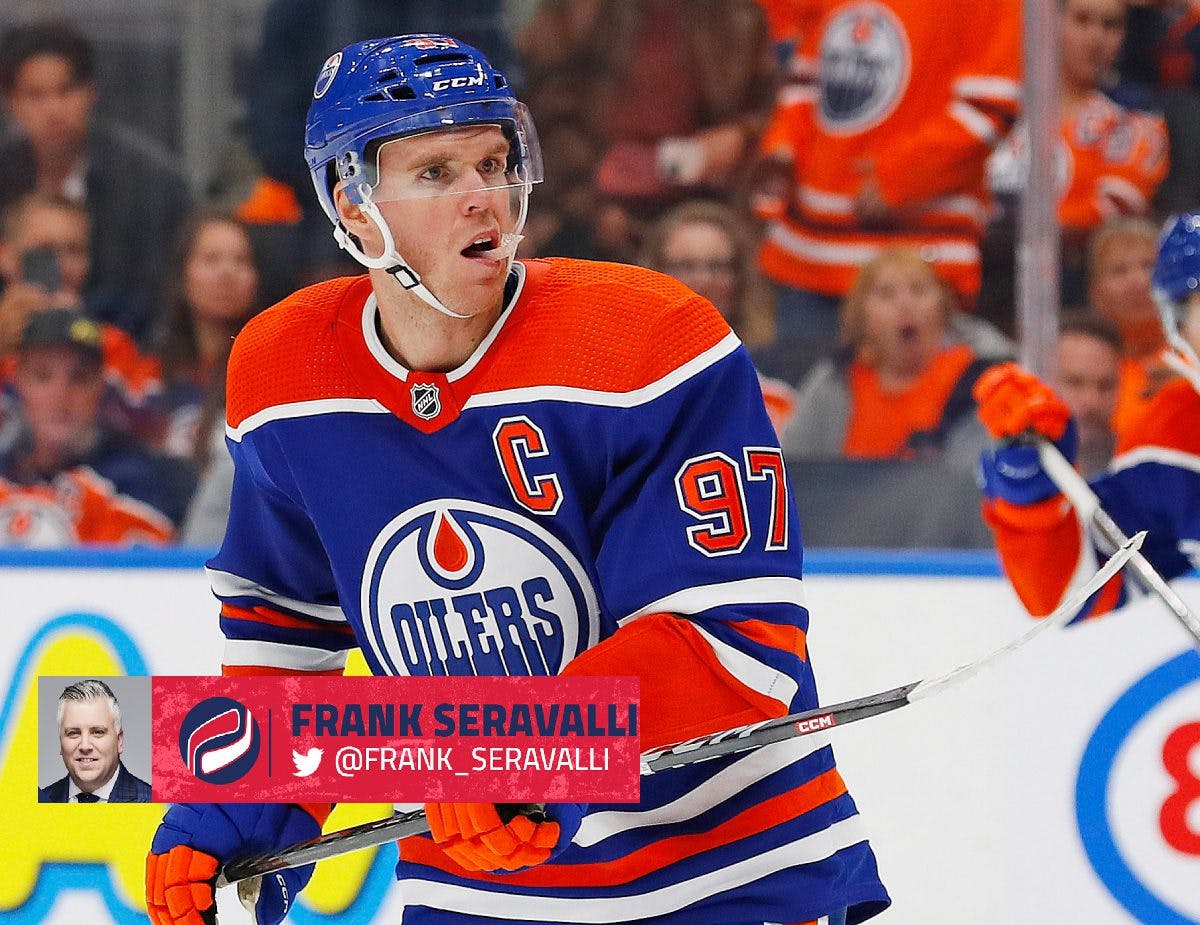
It’s that time of year again, the annual rite of passage in the NHL preseason, in which various publications rank the Top 50 or Top 100 players in the league – typically based entirely on subjective opinion.
Those rankings are always fun. They spark debate and intrigue. They also leave a lot of questions.
How exactly does one choose between Cale Makar and Nathan MacKinnon? They play two different positions, and they couldn’t be more different players. It’s an apples to oranges comparison to ask, “Who is better?” They’re both equally sublime. But we enjoy it because these are the same debates that have raged on in hockey-mad tap rooms for decades.
But rather than throw every player, different roles and all, into one pot and try to rank them, we’re going to take a different approach.
We are unveiling Daily Faceoff’s first-ever “Archetype Rankings,” as a way to classify players into different categories. An archetype is a concept of form, an attempt to define the fundamental characteristics of something.
That can be difficult to do for hockey players. Most do not fit neatly into one box. But that is what we will attempt with the help of five front office executives from around the NHL, who provided opinion and feedback. We have also enlisted the help of Stathletes as a third-party data supplier to help with context and analysis to what our collective eyes may be missing.
In fact, NHL front offices have been working on similar archetypes projects for the last months and years. Archetype classification and rankings are known to be a big part of the team building process for Julien BriseBois and his two-time Stanley Cup champion Tampa Bay Lightning. The best ones have properly categorized players because it helps in four important ways for team building:
1) It aids management in mapping out how previously successful teams and Stanley Cup winners have built their teams by archetype;
2) It allows management to map out their team’s own excess/redundancies in certain archetypes and identify weaknesses on their roster;
3) It can quickly identify other teams that have excess/redundancies that might present acquisition opportunities;
4) Finally, it can allow teams to take it a step further and identify salary cap prices/averages to archetypes and identify potential value propositions based on how the rest of the league perceives and values certain roles.
With that, we have identified and created nine different ‘archetypes’ for player classification in our first iteration. For the purposes of this exercise, a player may be included in only one archetype:
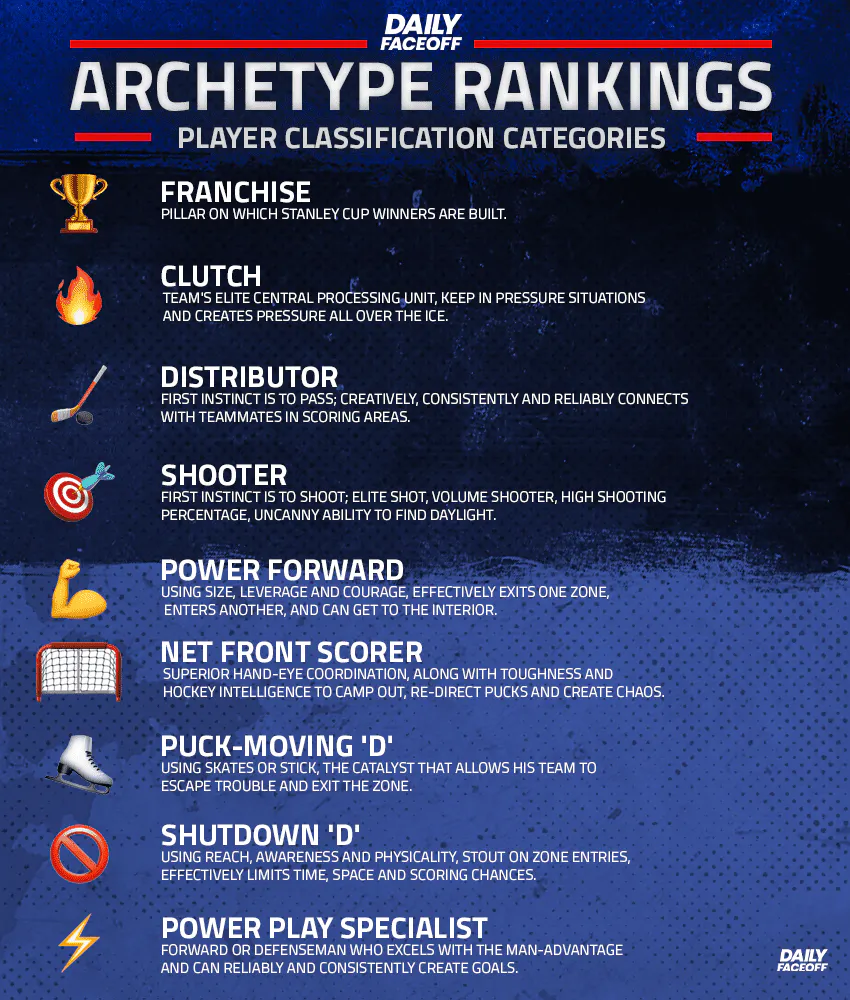
We are ready to unveil our first set of archetype rankings in the Franchise Player category. In some ways, this is the easiest classification to both define and classify. So much of it relies on gut instinct and first blush answer: “Is this a player you would build a franchise around?”
Who meets that threshold and where to draw the line proved to be much more difficult.
For the 2022-23 season, we are projecting 17 players will rise to the rarified air of the Franchise definition. Interestingly, three franchises had more than one Franchise player. The final cut consisted of 11 forwards, three defensemen and three goaltenders in the league’s most exclusive bucket, which may be interesting in an of itself in terms of how positions are valued in the league:

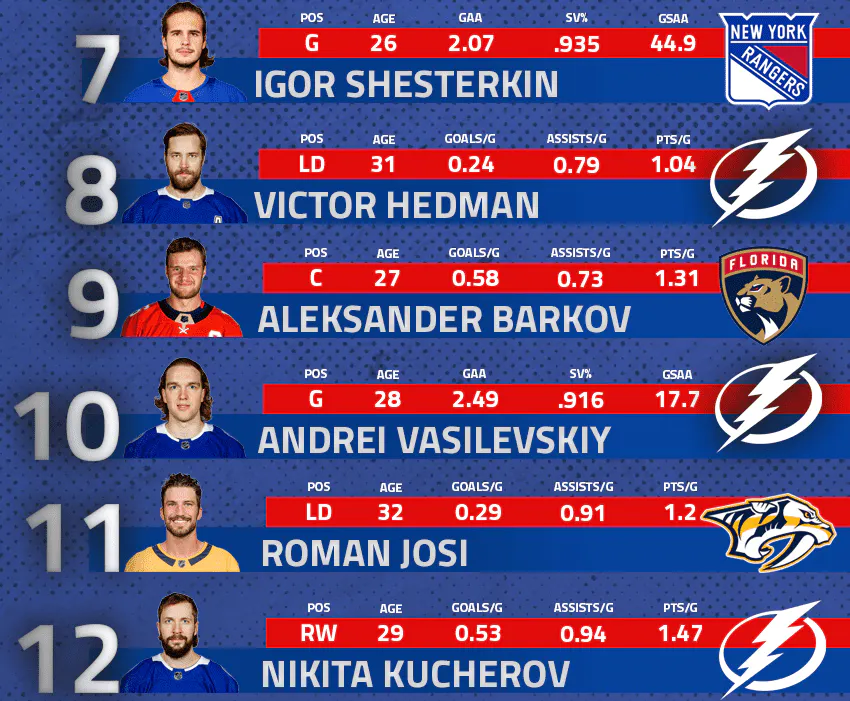
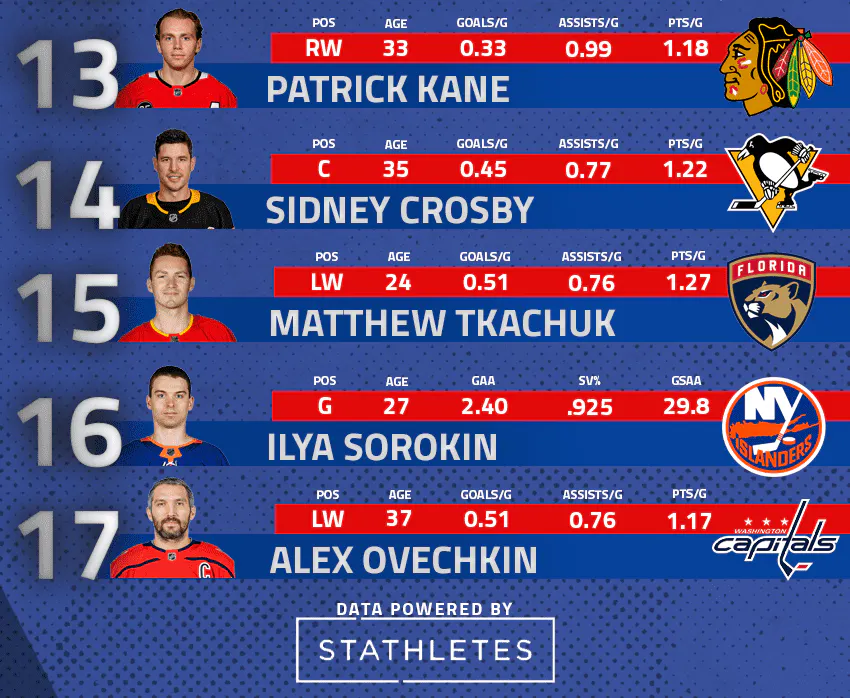
Under consideration (in alphabetical order): Patrice Bergeron, Drew Doughty, Jack Eichel, Johnny Gaudreau, Miro Heiskanen, Connor Hellebuyck, Jonathan Huberdeau, Anze Kopitar, Mitch Marner, Charlie McAvoy, Brayden Point, Jusse Saros.
With some of the elite superstars left off the Franchise list, it becomes a bit easier to envision which archetype classification they might fall under. Gaudreau and Huberdeau are two of the elite passers and playmakers in the league, for instance, so you can expect them in the Distributor archetype ranking in the coming days.
The Franchise ranking raised significant questions from front office personnel polled, such as: “Is Alex Ovechkin still a franchise player at age 37? Is Matthew Tkachuk unique enough to be considered a franchise player?” The consensus answer to both of those questions was yes. Franchise players are inherently unicorns.
There were some agonizingly close calls. Heiskanen was universally respected but fell short because of his relative lack of point production that the other three defensemen have demonstrated. Front office personnel gave the nod to Sorokin over Saros based on the upcoming season projection and his rise into Vezina conversation last year. “Sorokin is a generational goaltending talent, I tend to view Saros more as a workhorse,” one front office member said. Another lobbied for the inclusion of Hellebuyck, who is coming off a difficult campaign in Winnipeg and is now facing the unknown after a tumultuous offseason.
“I only know one thing: Drew Doughty is going to be pissed at this ranking,” another front office executive said. “He started so strong last year and was distraught to go down with an injury. He was determined to be a top defenseman again and prove people wrong. Now he has to do it all over again.”
Which player who didn’t make the cut do you feel deserved to be worthy of the Franchise designation? Which player who didn’t receive significant consideration should have? Leave a comment below.
Up Next: Clutch.
_____
POINTSBET IS LIVE IN ONTARIO
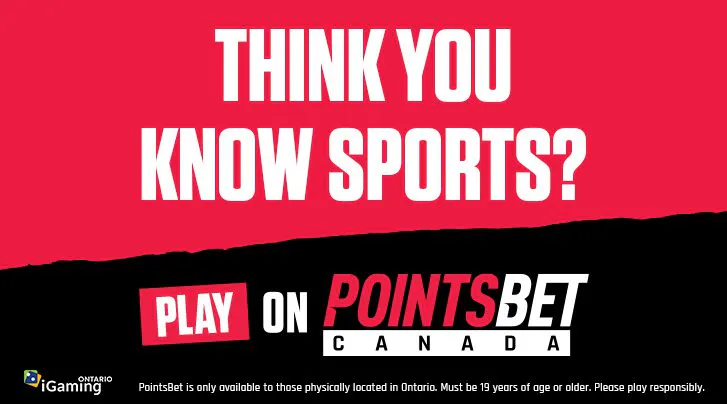
Think you know sports? PointsBet Canada is live in Ontario!